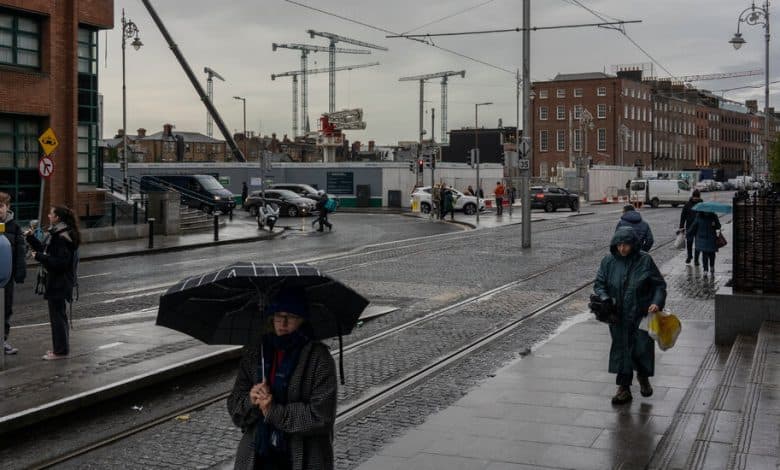‘The Social Contract Has Completely Ruptured’: Ireland’s Housing Crisis

Before sunrise each day, Aoife Diver, a teacher in Dublin, gets into her car and drives for up to 90 minutes from her uncle’s house to the opposite side of the Irish capital.
After school, it is back in the car for the reverse commute. On a recent evening, Ms. Diver, 25, sat in stop-and-go traffic, the red of the brake lights in front glowing through the windshield, as dusk turned to darkness.
It was not always like this. She used to share a house with five friends close to the school where she works in South Dublin. But when her rent and bills reached almost half of her monthly salary last year, she knew she had to move back in with family.
“There’s very little housing available, and what is available is way out of my reach,” she said. “Eventually, I probably will have to move somewhere else because I’m never going to be able to afford a house or an apartment on my own up in Dublin.”
The skyrocketing cost of private rentals has left many people struggling to afford housing in Dublin and other Irish cities, pushing some to move abroad and others to commute long distances. The crunch has left teachers and social workers priced out of the communities they serve, professional couples unable to buy homes and people on lower incomes fearing homelessness.
The recent xenophobic riots in Dublin capitalized on the grievances of people struggling to cover their housing costs and exposed to the world the deep fractures that the crisis has created. But the issue is decades in the making, experts say, and has become the driving force in Irish politics.
“Policy created this crisis,” said Rory Hearne, an associate professor in social policy at Maynooth University, west of Dublin. “It’s not immigrants, it’s not asylum seekers,” he added, naming groups the far right accuses of pushing up housing demand. “The housing policy created this housing crisis, and that complete refusal to develop public housing and to build affordable housing.”
While a major issue across Ireland, the housing shortage is felt most acutely in the Dublin region, home to around a quarter of the country’s population of just over five million. Two-thirds of Irish people 18 to 34 still live with their parents — one of the highest rates in Europe according to E.U. statistics, which put the continent’s average at 42 percent.
The average standardized monthly rent in Dublin is now 2,102 euros — about $2,200, and double what it was a decade ago, according to official figures. With average salaries in the capital last year at around €3,285 a month, that is out of reach for many.
The biggest cause, analysts say, is a failure by successive governments to invest in social housing, which local authorities once built for those who could not afford to rent privately. During the Celtic Tiger period in the late 1990s and early 2000s, as Ireland’s economy boomed, private construction exploded and landlords were encouraged to scoop up rental properties as investments, squeezing out less affluent buyers.
Then the market collapsed after the financial crisis of 2008. Housing projects were abandoned half finished. Homes were foreclosed on. Ireland set up the National Asset Management Agency, or NAMA, which acquired portfolios of delinquent loans and later sold them at discounted prices to so-called vulture funds. For a time, development stopped, and as supply shrank, prices were driven up.
For years even before the crash, there had been a shift away from social housing built by local authorities and more of a reliance on the market. As building restarted in recent years, it has been more focused on short-term rental development or luxury builds.
Dr. Hearne said that as more people were priced out of homeownership and as social housing dwindled, anyone not already on the housing ladder was increasingly pushed toward the private rental market.
Younger people today were often stuck in high-cost rentals or living with their parents, unable to see a future where they could become homeowners, he said.
“I think the social contract has been completely ruptured for younger generations,” Dr. Hearne said. “In the past, this was when people were getting married, having kids, and now they’re stuck in their childhood home.”
Lower-income tenants find themselves renting privately with the costs subsidized by the government instead of in dedicated social housing. With limited tenant protections, their situations can be precarious.
“You have the most vulnerable households, lone parents, low-income families who are in the private rental sector, and if they get evicted, they can’t afford the new rent so they become homeless,” Dr. Hearne said, noting that



